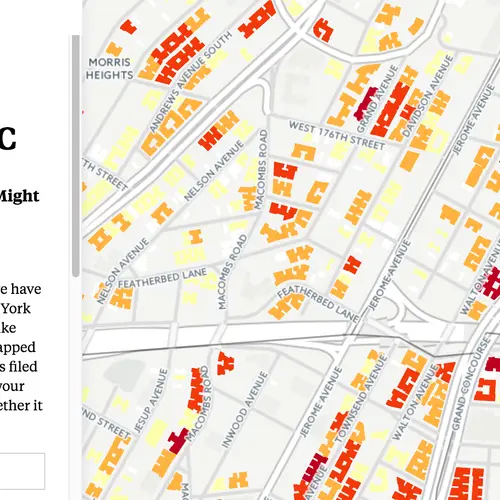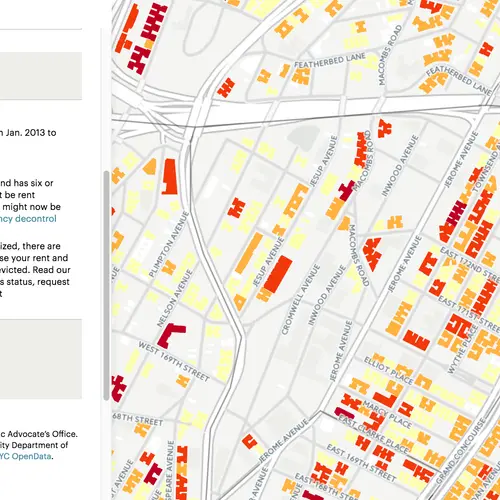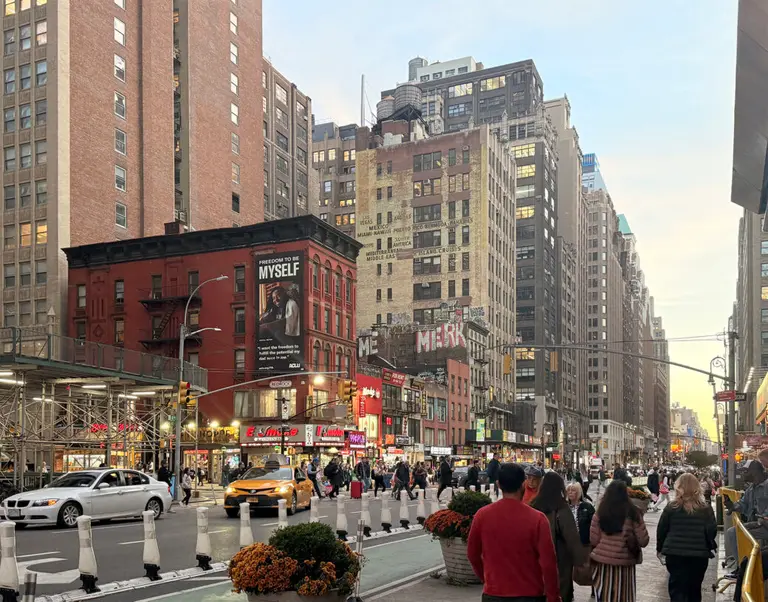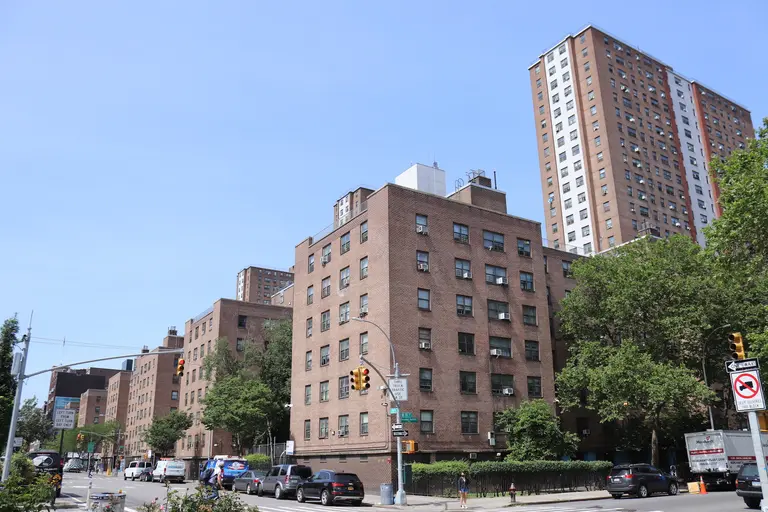Map highlights the correlation between evictions and rent stabilization loss in NYC
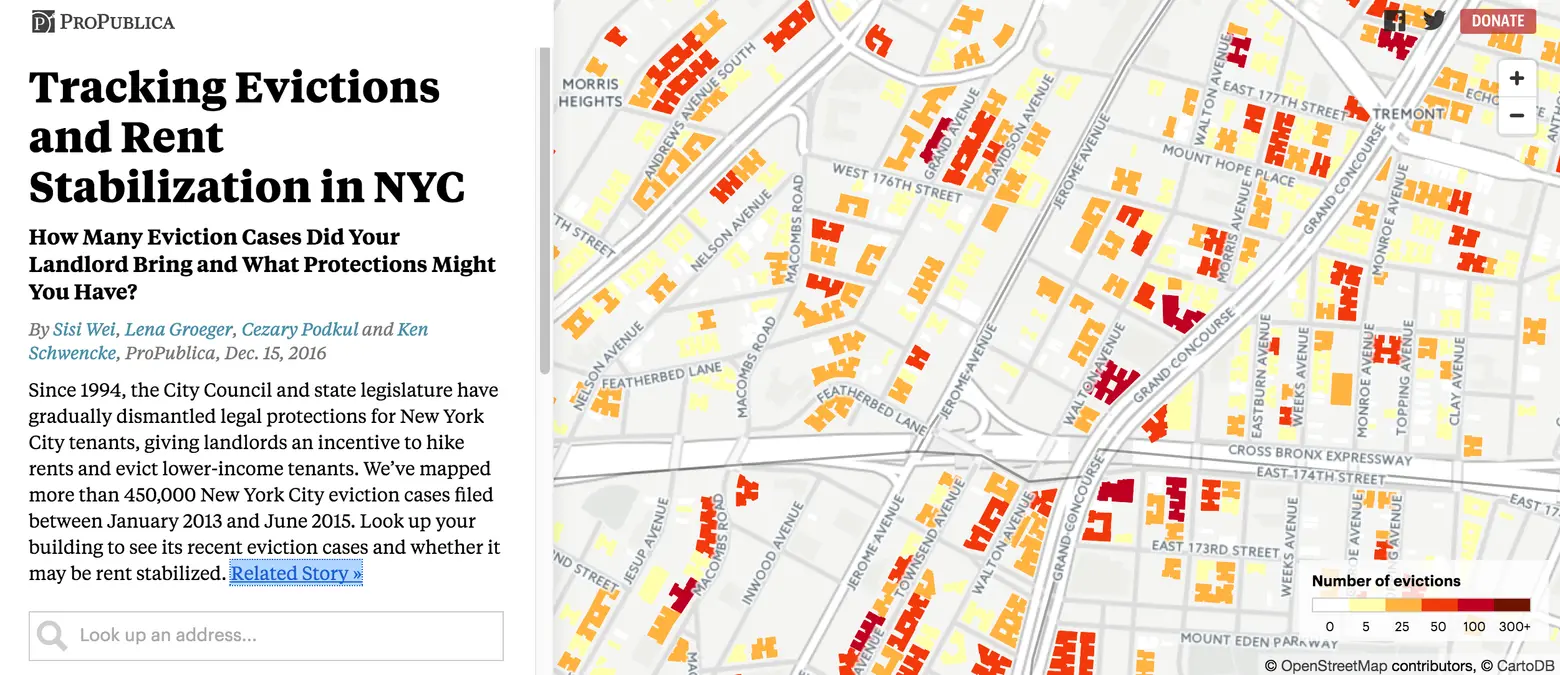
View the map from ProPublica in its interactive form here >>
Last year close to 22,000 tenants across the city were evicted from their homes, an issue that the folks at ProPublica trace to a 1994 City Council vote on “vacancy decontrol,” which allowed landlords to evade rent regulation and charge market rate for vacated apartments that cost $2,000 or more a month (it’s now $2,500). Not only did this incentive rent hikes, but it’s led to a major blow to the city’s rent stabilized inventory. To show the correlation between evictions and rent regulation, ProPublica has created this interactive map of the more than 450,000 eviction cases filed between January 2013 and June 2015. It shows the number of evictions in a given building (it’s shocking how many have had more than 50 in less than three years) and whether or not that building is rent stabilized.
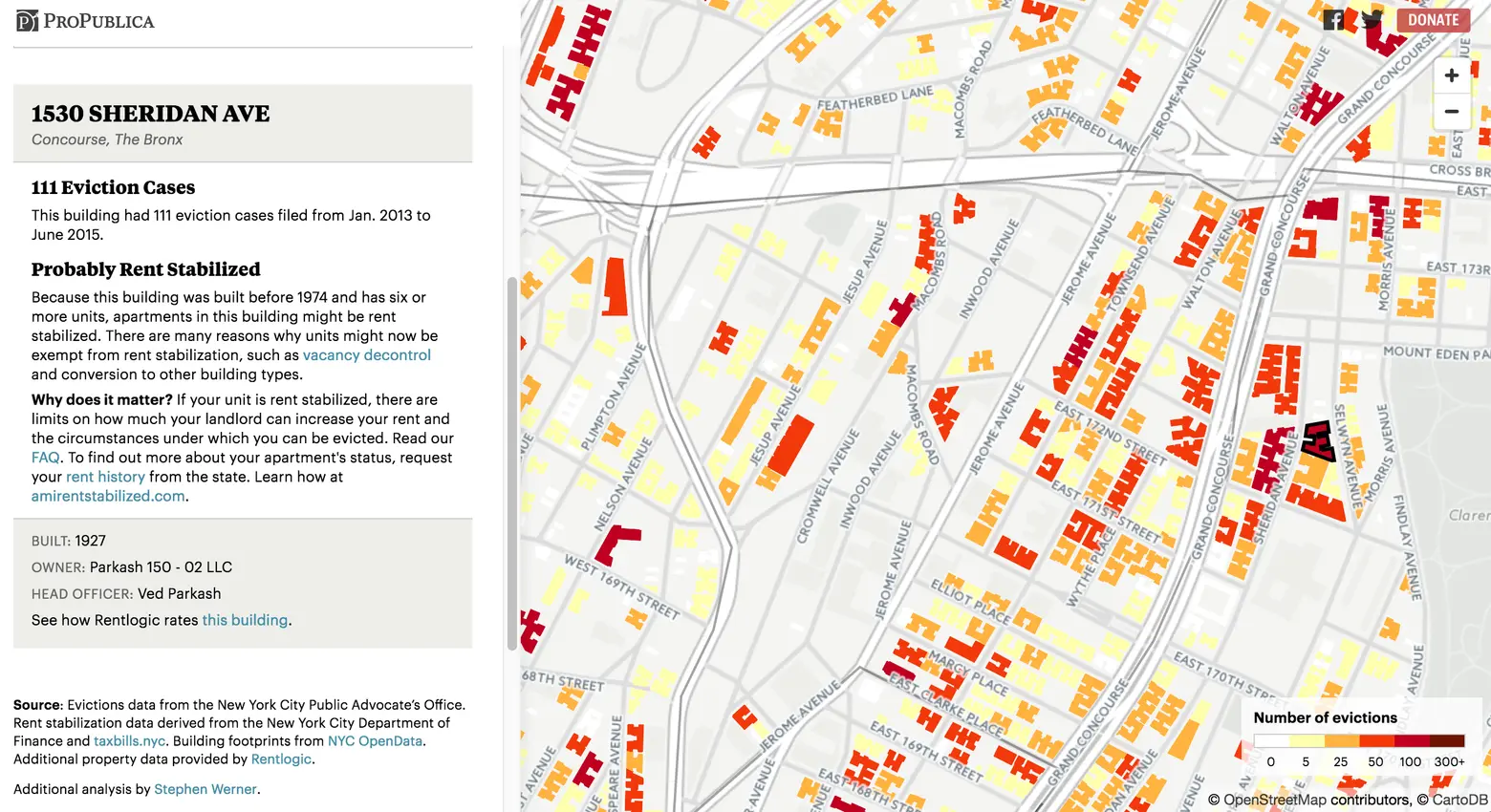
As 6sqft reported in July 2015, “Since 1994, nearly 250,000 units have lost rent regulation protections, and over these past eight years alone, New York City has lost more than 50,000 rent stabilized apartments.” These numbers have only increased over the past 18 months. Landlords can also take advantage of a loophole whereby they claim expensive renovations after a tenant moves out of an apartment below the $2,000 mark. Known as major capital improvements (MCIs), this allows them to add the reno work to the rent and meet the threshold.
Of course there is no hard and fast data that evictions lead to a loss of rent stabilized apartments, but based on the ways in which landlords gain market-rate rents, many have turned to giving current tenants the boot. In fact, ProPublica found that “less than 10 percent of all identified landlords were responsible for 80 percent of the cases.”
To try to curb the practice, the City Council recently held a hearing on a bill that would guarantee lawyers for all low-income residents facing eviction. As it currently stands, more than 70 percent of low-income tenants who must attend Housing Court do so without legal representation, while landlords almost always have lawyers by their sides. The bill would provide representation for tenants who make below 200 percent of the federal poverty line, which is $23,540 for an individual or $48,500 for a family of four. Fortunately, the act is supported by the large majority of council members, and coupled with the knowledge set forth by ProPublica’s map, this could be a major game changer for tenants’ right and affordable housing in the city.
[Via ProPublica]
RELATED:
- MAP: Two thirds of landlords benefiting from 421-a tax breaks didn’t file rent regulation paperwork
- New bill would guarantee a lawyer for tenants facing eviction
- Rent Stabilization Demystified: Know the Rules, Your Rights, and if You’re Getting Cheated
- New Map Shows Where More Than 50,000 Rent Stabilized Apartments Have Been Lost
